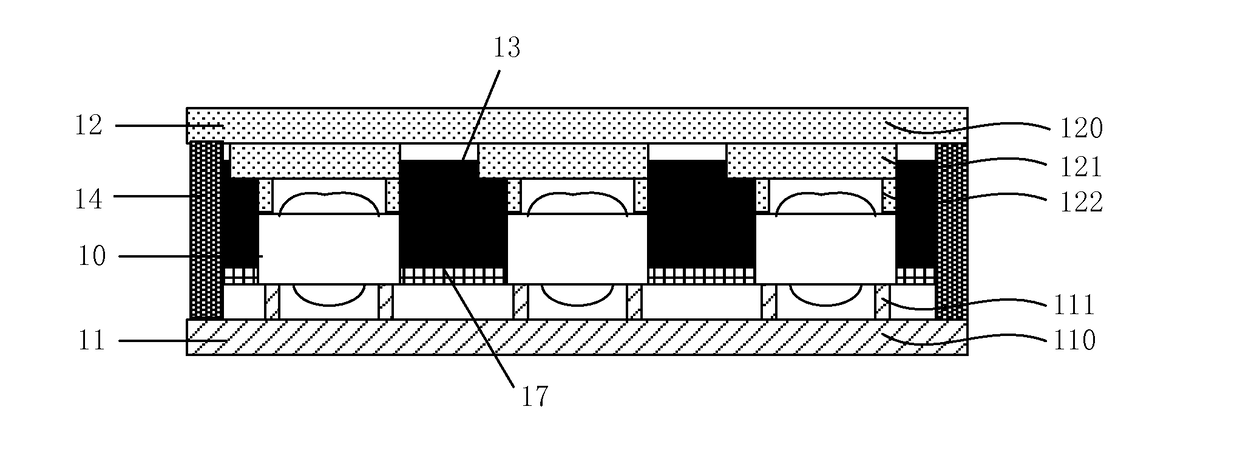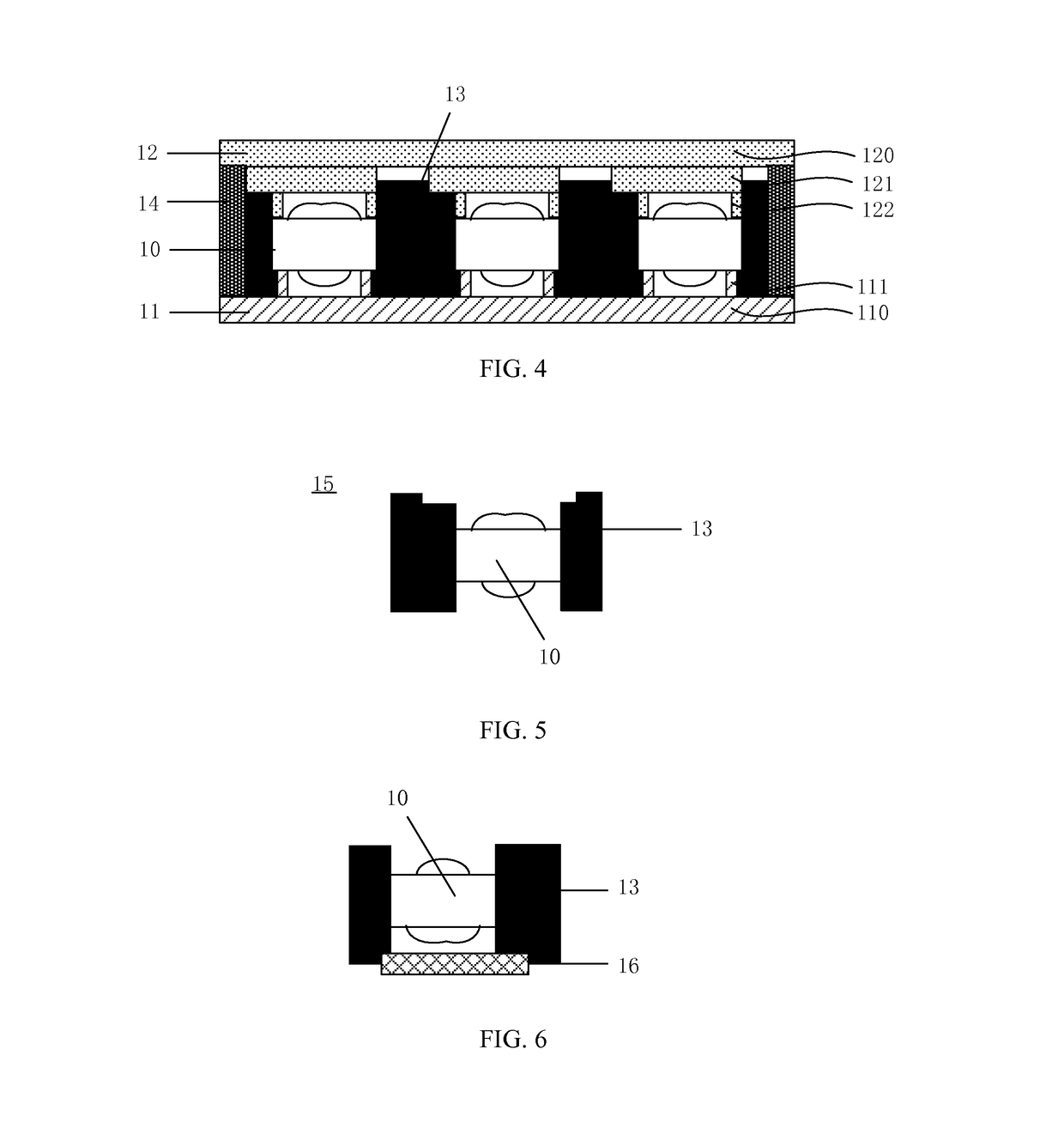Method of forming packaged lens modules
a technology of lens modules and packaging, applied in the field of semiconductor technology, can solve the problems of increasing the complexity of methods, physical damage to lenses, and degradation of imaging performance of camera modules being fabricated, and achieve the effects of improving efficiency, time saving, and process simplification
- Summary
- Abstract
- Description
- Claims
- Application Information
AI Technical Summary
Benefits of technology
Problems solved by technology
Method used
Image
Examples
Embodiment Construction
[0030]The present invention will become apparent from the following detailed description of illustrative embodiments thereof, which is to be read in connection with the accompanying drawings. It is to be understood that the present invention is not limited to the embodiments set forth below and any alternative thereto generally known by those skilled in the art also falls in the scope of the invention.
[0031]In addition, the accompanying drawings that are merely intended to facilitate the explanation of the invention may not be drawn to scale for the sake of clarity or simplicity, and should thus not be construed as limiting the present invention in any way.
[0032]The core principle of the present invention is to simplify the conventional packaged lens module fabrication methods to make it more time-saving and more efficient by fixing a plurality of lens modules between a first mold plate and a second mold plate and filling a black material in gaps between the lens modules.
[0033]Refer...
PUM
| Property | Measurement | Unit |
|---|---|---|
| focal lengths | aaaaa | aaaaa |
| focal lengths | aaaaa | aaaaa |
| back focal length | aaaaa | aaaaa |
Abstract
Description
Claims
Application Information
 Login to view more
Login to view more - R&D Engineer
- R&D Manager
- IP Professional
- Industry Leading Data Capabilities
- Powerful AI technology
- Patent DNA Extraction
Browse by: Latest US Patents, China's latest patents, Technical Efficacy Thesaurus, Application Domain, Technology Topic.
© 2024 PatSnap. All rights reserved.Legal|Privacy policy|Modern Slavery Act Transparency Statement|Sitemap



